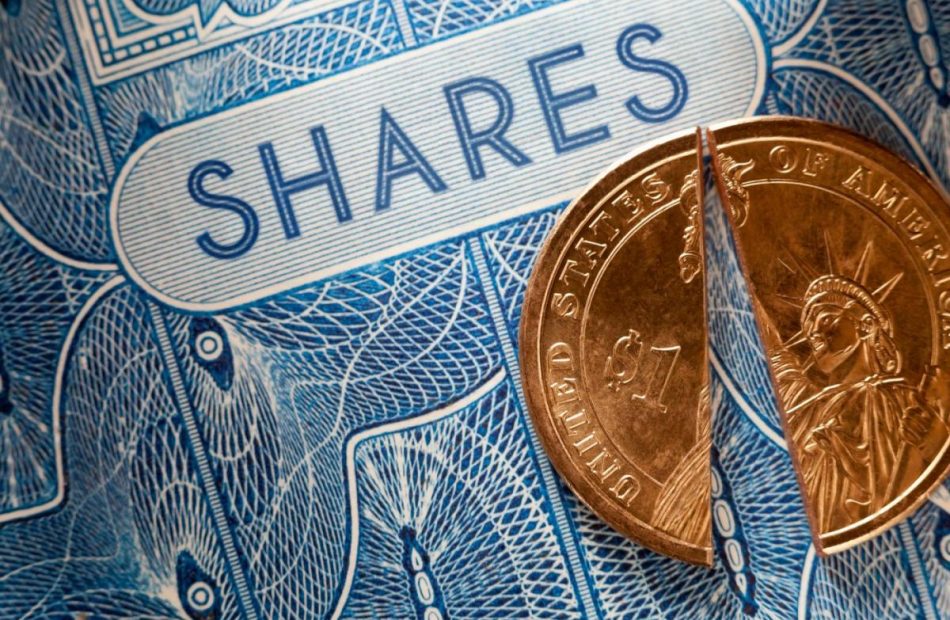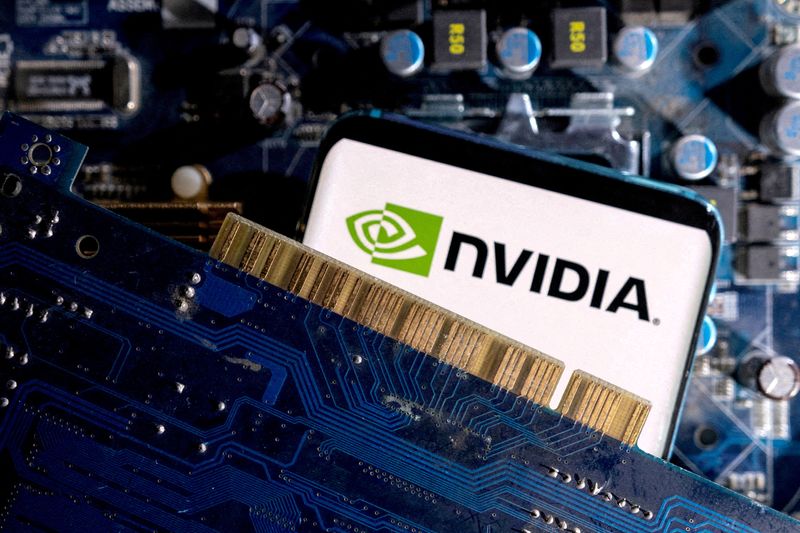Prediction: Nvidia Will Crush Wall Street Expectations on Aug. 28 — but There's a Catch for the AI Stock
Nvidia (NASDAQ: NVDA) has been 2024’s most influential stock. Rising artificial intelligence (AI) demand spurred enormous sales and earnings growth for the company, and the business momentum translated to incredible valuation gains.
The processing leader’s share price is up 161% across this year’s trading alone, and its incredible performance has been a bullish catalyst for the market at large and other individual players in the AI space. Now, Nvidia stock is on the verge of its next big test.
After the market closes on Wednesday, Aug. 28, the company will publish results for the second quarter of its 2025 fiscal year (which ended July 28). Management will also host a conference call to give investors further insight into the business and its outlook.
The earnings release will likely be one of this year’s most important stock market events, and anticipation on Wall Street is running high. There’s plenty of speculation on whether Nvidia will beat earnings expectations, and I’m predicting that the AI giant will comfortably beat most targets. But buckle up, because this one could get wild.
Nvidia looks poised to crush sales and earnings targets
In its fiscal 2025 first quarter update, Nvidia management guided for roughly $28 billion in sales in the second quarter. If the company hits that target, it would mean delivering annual sales growth of 107%. Management also expects Nvidia’s gross margin to grow to 74.8%. Those numbers are nothing to sneeze at.
Wall Street is even more optimistic, with the average analyst estimate calling for the AI frontrunner to deliver sales of $28.6 billion in the period. Thus far, the company has been building an impressive streak of performance beats. Take a look at the table below, which tracks Nvidia’s revenue against Wall Street’s expectations over the company’s last four reported quarters.
|
Fiscal Quarter |
Wall Street Consensus Revenue Target |
Actual Revenue |
Percentage Beat |
|---|---|---|---|
|
Q2 2024 |
$11.22 billion |
$13.51 billion |
20.4% |
|
Q3 2024 |
$16.18 billion |
$18.12 billion |
12% |
|
Q4 2024 |
$20.62 billion |
$22.1 billion |
7.2% |
|
Q1 2025 |
$24.65 billion |
$26.04 billion |
5.6% |
Data sources: Nvidia and CNBC.
With the company posting fantastic margins, sales beats have also meant that the company’s earnings have crushed Wall Street’s expectations. Across the last year, the company’s quarterly non-GAAP (adjusted) earnings beat the midpoint Wall Street target by an average of 17.3%.
Tech industry capex is flashing signals
There’s a very good chance that Nvidia will manage to beat its own targets and the average Wall Street estimates with its upcoming quarterly report. Here’s why.
With its last quarterly report, Microsoft announced capital expenditures (capex) of $19 billion — with nearly all of the spending going to improving the company’s cloud and AI infrastructure. Capex was up 35% from the previous quarter, and management also announced that spending is poised to continue climbing over the next year. Microsoft is widely believed to be Nvidia’s largest customer, and increased spending on AI infrastructure is a clear bullish indicator.
The software giant wasn’t the only one to deliver encouraging capex news recently. Meta Platforms, another big Nvidia customer, also raised its capital-spending guidance range with the second-quarter results it published at the end of last month.
In general, the sentiment among many leading tech companies appears to be that it’s better to invest heavily in artificial intelligence right now than to risk being left behind or playing catch-up with competitors. Along with promising capex data from technology giants, that bodes well for Nvidia — and I think the company will beat top- and bottom-line expectations in Q2.
But there’s a catch.
Nvidia stock needs more than strong Q2 results for a post-earnings surge
While the average Wall Street target calls for Nvidia to report revenue of $28.6 billion for the second quarter, some analysts have set the target significantly higher. For example, HSBC expects the business to report $30 billion in revenue for the period.
Beating the average Wall Street target is often enough to trigger bullish valuation momentum for a company, but that isn’t always the case. Hot stocks in particular are often held to higher standards — with investors looking for the business to deliver results that match or exceed elevated expectations. It’s also worth noting that Wall Street analysts have gotten more accurate in modeling the company’s performance over the last year of reporting, with Nvidia’s quarterly sales beat going from 20.4% in last year’s second quarter to 5.6% in this year’s first quarter.
Even if Nvidia manages to far exceed the average Wall Street targets, there are other catalysts that could lead to volatile trading after earnings. Investors will also have the company’s guidance for the current quarter and future roadmap under the microscope, and reports have emerged that the AI leader may be delaying the release of its next-generation Blackwell processors. Depending on what Blackwell news Nvidia has to share, the stock could see big moves in either direction.
So even with signs that the AI luminary will deliver strong Q2 results, investors should understand the stage could be set for post-earnings valuation volatility. Rather than trying to time short-term buying and selling moves around what the company’s share price will do soon after earnings, it makes more sense to approach an investment in Nvidia with the company’s long-term outlook in mind. Things generally continue to look quite promising on that front.
Should you invest $1,000 in Nvidia right now?
Before you buy stock in Nvidia, consider this:
The Motley Fool Stock Advisor analyst team just identified what they believe are the 10 best stocks for investors to buy now… and Nvidia wasn’t one of them. The 10 stocks that made the cut could produce monster returns in the coming years.
Consider when Nvidia made this list on April 15, 2005… if you invested $1,000 at the time of our recommendation, you’d have $792,725!*
Stock Advisor provides investors with an easy-to-follow blueprint for success, including guidance on building a portfolio, regular updates from analysts, and two new stock picks each month. The Stock Advisor service has more than quadrupled the return of S&P 500 since 2002*.
*Stock Advisor returns as of August 26, 2024
HSBC Holdings is an advertising partner of The Ascent, a Motley Fool company. Randi Zuckerberg, a former director of market development and spokeswoman for Facebook and sister to Meta Platforms CEO Mark Zuckerberg, is a member of The Motley Fool’s board of directors. Keith Noonan has no position in any of the stocks mentioned. The Motley Fool has positions in and recommends Meta Platforms, Microsoft, and Nvidia. The Motley Fool recommends HSBC Holdings and recommends the following options: long January 2026 $395 calls on Microsoft and short January 2026 $405 calls on Microsoft. The Motley Fool has a disclosure policy.
Prediction: Nvidia Will Crush Wall Street Expectations on Aug. 28 — but There’s a Catch for the AI Stock was originally published by The Motley Fool
Move Over, Nvidia and Broadcom: Wall Street's Next Stock-Split Stock — a 120,000% Gainer Since Its IPO — Is Ready to Take Center Stage
Although artificial intelligence (AI) has been the talk of Wall Street since 2023 began, the return of stock-split euphoria has given AI a run for its money in 2024.
A stock split is a mechanism publicly traded companies can lean on to cosmetically alter their share price and outstanding share count. Its superficial in the sense that adjusting share price and share count by the same magnitude has no impact on market cap or a company’s underlying operating performance.
Splits come in two forms, with one being substantially more popular than the other. Reverse-stock splits are geared toward increasing a company’s share price. This is usually done to ensure it meets the continued minimum listing standards of a major stock exchange.
On the other hand, forward-stock splits reduce a company’s share price. The purpose of a forward split is to make shares more nominally affordable for investors who lack access to fractional-share purchases through their broker. Since forward splits are almost always announced from a position of operating strength, this is the type of split investors gravitate to.
Since 2024 began, 13 time-tested businesses have announced or completed a stock split — all but one of which is of the forward-split variety. While no splits have garnered more attention than AI darlings Nvidia (NASDAQ: NVDA) and Broadcom (NASDAQ: AVGO), there’s another scorching-hot stock-split stock readying for its moment in the spotlight.
According to the analysts at PwC, artificial intelligence is forecast to add $15.7 trillion to the global economy by 2030 through various consumption-side benefits and productivity improvements. With an addressable market this large, it’s not surprising to see Wall Street fall head over heels for AI stocks.
Nvidia has been the runaway face of the AI revolution. Since the start of 2023, Nvidia’s market cap has increased by $2.8 trillion, which is the fastest ascent we’ve ever witnessed from a market-leading business. This was the catalyst that compelled Nvidia’s board to approve a 10-for-1 forward split.
Nvidia’s astronomical gains are a function of its H100 graphics processing units (GPUs) being the undisputed top choice in AI-accelerated data centers. The analysts at semiconductor firm TechInsights note that Nvidia’s GPUs accounted for all but 90,000 of the 3.85 million GPUs shipped in 2023 to data centers.
With overwhelming demand comes the exceptional pricing power that’s sent the company’s adjusted gross margin considerably higher. Nvidia’s H100 sports a price tag ranging from $30,000 to $40,000, which is well above what its competitors are charging for their AI-GPUs.
Don’t overlook Nvidia’s CUDA platform, either. This software kit that helps developers build large language models is working hand-in-hand with the company’s hardware to keep customers within its ecosystem of products and services.
Meanwhile, Broadcom has been a key supplier of networking solutions. Last year, it introduced its Jericho3-AI fabric, which can connect up to 32,000 GPUs in high-compute data centers. The goal of Broadcom’s solutions is to reduce tail latency and maximize the computing potential of GPUs in use.
Although Broadcom’s stock has moved up in a big way because of its AI networking solutions — this sizable move led to its first-ever stock split, 10-for-1, following the close of trading on July 12 — there’s a lot more to this company than just solutions tied to artificial intelligence.
For example, Broadcom is a leader in developing wireless chips and solutions for next-generation smartphones. Telecom companies upgrading their wireless networks to support 5G download speeds have increased demand for the chips and accessories used in next-gen wireless devices.
While Nvidia and Broadcom have had their moment in the sun, another perennial outperformer, which has nothing to do with AI and has gained more than 120,000%, including dividends paid, since its initial public offering (IPO), is ready to step forward and become Wall Street’s newest stock-split stock.
This 120,000%-gainer is two weeks away from becoming Wall Street’s newest stock-split stock
Following the close of trading on September 11, corporate uniform and business services provider Cintas (NASDAQ: CTAS) will complete a 4-for-1 forward split and join the ranks of an elite group of outperforming stock-split stocks in 2024.
This marks the sixth time Cintas will have conducted a forward split since its IPO in August 1983:
-
April 1987: 2-for-1
-
April 1991: 3-for-2
-
April 1992: 2-for-1
-
November 1997: 2-for-1
-
March 2000: 3-for-2
-
September 2024: 4-for-1
How does a company that supplies corporate uniforms, floor mats, towels, and safety kits outperform Wall Street’s benchmark indexes so decisively over a four-decade stretch? History and revenue diversity are the first important puzzle pieces.
Based on the company’s own admission in June, it has “more than 1 million businesses of all types and sizes” that it services. With no single customer accounting for an outsized percentage of sales, Cintas doesn’t have to worry about its proverbial ship sinking because of the struggles of one or more of its customers.
Additionally, Cintas has history on its side. Although recessions are a perfectly normal aspect of the economic cycle, they’re almost always short-lived. Periods of economic growth stick around significantly longer, thusly allowing Cintas’s customers to expand. In turn, this increases demand for corporate uniforms and business services over time.
Another key to the company’s long-term success has been its willingness to grow via acquisition. Since this century began, it’s scooped up Omni Services (2002), Zee Medical (2015), and G&K Services (2017), to name a few. These earnings-accretive deals expand the company’s product portfolio and work to keep existing clients within its network of products and services.
Don’t overlook innovation, either. Cintas has introduced new products to lure in new clients, and leaned on a variety of cross-selling solutions to encourage existing clients to spend more.
The cherry on top is the company’s incredible capital-return program. It’s raised its dividend every year since going public in 1983 and recently added to its share repurchase program, which stood at $1.5 billion, as of July 23, 2024. A company that can raise its payout for four decades without interruption is a business that’s demonstrated it can navigate anything the U.S. economy throws its way.
The one downside with Cintas is its valuation. Though being an industry leader has its perks and comes with some degree of a valuation premium, a forward price-to-earnings ratio of nearly 43 for a company expected to grow its earnings per share by an annual average of 13% through 2028 is difficult to justify.
Should you invest $1,000 in Cintas right now?
Before you buy stock in Cintas, consider this:
The Motley Fool Stock Advisor analyst team just identified what they believe are the 10 best stocks for investors to buy now… and Cintas wasn’t one of them. The 10 stocks that made the cut could produce monster returns in the coming years.
Consider when Nvidia made this list on April 15, 2005… if you invested $1,000 at the time of our recommendation, you’d have $792,725!*
Stock Advisor provides investors with an easy-to-follow blueprint for success, including guidance on building a portfolio, regular updates from analysts, and two new stock picks each month. The Stock Advisor service has more than quadrupled the return of S&P 500 since 2002*.
*Stock Advisor returns as of August 22, 2024
Sean Williams has no position in any of the stocks mentioned. The Motley Fool has positions in and recommends Nvidia. The Motley Fool recommends Broadcom and Cintas. The Motley Fool has a disclosure policy.
Move Over, Nvidia and Broadcom: Wall Street’s Next Stock-Split Stock — a 120,000% Gainer Since Its IPO — Is Ready to Take Center Stage was originally published by The Motley Fool
Why investors should load up on cheap, 'left behind' stocks as the market trades near record highs, Jeremy Grantham's GMO says
-
Investors can best prepare against an eventual market slowdown by buying cheap, unloved stocks, GMO says.
-
The investment firm finds the extreme discounts of deep value stocks attractive.
-
Once bullish sentiment starts to unwind, these valuations should correct, GMO wrote.
It’s time to embrace the market’s cheapest stocks, with the value sector poised to eventually roar back, GMO wrote in a new research note.
The investment firm, led by legendary investor Jeremy Grantham, outlined a high conviction in “deep value” equities — or stocks that are cheap relative to their genuine fundamental worth.
Based on this criteria, the investment firm began targeting the cheapest 20% of stocks in May 2023, steering clear of “deceptively cheap” value traps.
“In a world where many stocks are being driven ever higher by positive sentiment and investor optimism, many of the ones that have been most unloved and left behind are trading at extraordinary discounts,” the firm wrote.
Over the past year, US investment has skewed heavily toward large-cap tech names, helping benchmark indexes notch a series of all-time highs.
Against this backdrop, deep value stocks have become extremely cheap — not only against the broader market but also in comparison to history.
“Outside of the US all value is cheap, but deep value is in the 2nd percentile of its history,” the note said. “Within the US, deep value is similarly sitting at the 10th percentile of its history, while the rest of value should largely be ignorable at current valuations.”
According to GMO, that makes deep value well-positioned to deliver strong returns once investor sentiment toward mega-caps starts to unwind. Earlier this year, GMO projected a 1% decline in US large-caps in the next seven years, predicting that deep value stocks will achieve 7.6% gains.
“The S&P 500 is tech and growth heavy, so an investment in international value is the perfect complement from more than just a regional perspective,” GMO wrote.
Read the original article on Business Insider
Stock-Split Watch: 3 Top Stocks That Look Ready to Split
Stock splits attract a lot of attention among investors.
While they don’t change the fundamentals of a stock, they do act as a signal from management that it expects the stock to keep moving higher. That’s because stock splits represent milestones in a stock’s growth, and they make the price of an individual share cheaper, making it more affordable for retail investors.
There’s also some evidence that stocks outperform after a stock split, which may be due to the momentum from growth in the stock that led to the split and confidence from management that the stock will continue to move higher.
If you’re looking for the next stock-split stocks, here are three that could be next.
1. Booking Holdings
Booking Holdings (NASDAQ: BKNG) is the biggest online travel agency in the world, and it’s never had a stock split in its history, though it did do a reverse split in 2003 when it was on the brink of bankruptcy after the dot-com bubble burst.
Since then, Booking shares have skyrocketed, and its share price is now approaching $4,000 a share, making it higher than any other U.S. stock except for homebuilder NVR and Berkshire Hathaway Class A shares.
CEO Glenn Fogel recently tamped down expectations of a stock split as many other high-priced stocks have split their shares. In an interview with Barron’s, he responded to a question about a prospective stock split, saying, “I don’t think I want that kind of investor.”
Fogel’s not alone in that sentiment. Amazon founder Jeff Bezos also dismissed the concerns of short-term investors, insisting he was focused on the long term. However, Amazon eventually split its shares after Bezos passed the torch to current CEO Andy Jassy.
Despite Fogel’s comment, a Booking stock split seems increasingly likely if the share price continues to rise.
2. AutoZone
AutoZone (NYSE: AZO) is also one of the most expensive stocks on the market on an individual share price basis, and, like Booking, it’s been a longtime outperformer.
AutoZone and rival O’Reilly Automotive have long delivered outsize returns by adding new stores and serving a growing market for aftermarket auto parts, especially as the average age of a vehicle on the road is now greater than 12 years.
AutoZone stock now trades at more than $3,000 a share. The company hasn’t split its stock since 1994 and since then, the stock is up by roughly 42,000%.
The auto parts stock has also gained steadily over the last five years during a volatile stock market, showing the strength of its recession-proof business model.
The company hasn’t announced any plans for a stock split, but it would make sense to do one, especially since the stock seems well positioned to keep gaining.
3. MercadoLibre
Finally, MercadoLibre (NASDAQ: MELI) also looks like a good candidate for a stock split. The Latin American e-commerce leader just crossed $2,000 a share, and like the other stock on the list, has been a consistent winner on the stock market.
MercadoLibre has grown over the years by expanding its business into a third-party marketplace, digital payments network, logistics service, and lending business.
While MercadoLibre seems to have been eligible for a stock split for a while based on its share price, which has been over $1,000 for most of the last five years, the company has never split its share price in its history, which goes back to its IPO in 2007.
MercadoLibre hasn’t commented on a stock split, but it seems likely to happen if the stock keeps gaining. The company is still growing rapidly and margins are expanding, setting the stock up for more gains.
Don’t be surprised to see MercadoLibre split its stock in the coming years, if not sooner.
Don’t miss this second chance at a potentially lucrative opportunity
Ever feel like you missed the boat in buying the most successful stocks? Then you’ll want to hear this.
On rare occasions, our expert team of analysts issues a “Double Down” stock recommendation for companies that they think are about to pop. If you’re worried you’ve already missed your chance to invest, now is the best time to buy before it’s too late. And the numbers speak for themselves:
-
Amazon: if you invested $1,000 when we doubled down in 2010, you’d have $19,939!*
-
Apple: if you invested $1,000 when we doubled down in 2008, you’d have $42,912!*
-
Netflix: if you invested $1,000 when we doubled down in 2004, you’d have $370,348!*
Right now, we’re issuing “Double Down” alerts for three incredible companies, and there may not be another chance like this anytime soon.
*Stock Advisor returns as of August 26, 2024
John Mackey, former CEO of Whole Foods Market, an Amazon subsidiary, is a member of The Motley Fool’s board of directors. Jeremy Bowman has positions in Amazon and MercadoLibre. The Motley Fool has positions in and recommends Amazon, Berkshire Hathaway, Booking Holdings, MercadoLibre, and NVR. The Motley Fool has a disclosure policy.
Stock-Split Watch: 3 Top Stocks That Look Ready to Split was originally published by The Motley Fool
Cava Stock Tumbles Late As CEO, Key Insiders Sell Shares After Earnings Spike
Cava Group (CAVA) tumbled early Tuesday after CEO Brent Schulman and several key executives and directors disclosed sales of Cava stock in the wake of the Mediterranean-themed restaurant chain’s post-earnings spike to record highs.
↑
X
Dow Jones Hits All-Time Highs; Sprouts, Netflix, MercadoLibre In Focus
CEO Schulman sold 210,504 shares for $24.87 million, according to SEC filings released Monday night. Ted Xenohristos, Cava co-founder and chief concept officer, sold 98,490 shares for $12.387 million. CFO Patricia Tolivar sold 5,000 shares for $628,175. Board member James White sold 1,500 shares for $190,770.
A trust linked to board member David Bosserman sold 5,000 shares for $627,550.
Cava Stock Nearly Tripled In 2024
Cava stock fell 8% in early Tuesday stock market trading. Shares climbed 3.1% to 125.80 on Monday.
On Friday, Cava skyrocketed 19.6%. That’s after reporting second-quarter earnings spiked 183% with revenue growth picking up to 35%, both beating analyst views.
Year to date, Cava stock has skyrocketed nearly 193%.
Cava came public at 22 a share in June 2023.
Please follow Ed Carson on Threads at @edcarson1971 and X/Twitter at @IBD_ECarson for stock market updates and more.
YOU MAY ALSO LIKE:
Why This IBD Tool Simplifies The Search For Top Stocks
Catch The Next Big Winning Stock With MarketSmith
Best Growth Stocks To Buy And Watch
Nvidia sales likely doubled – even that may not impress investors
By Arsheeya Bajwa
(Reuters) – Nvidia is likely to report on Wednesday that its second-quarter revenue more than doubled. But investors used to its blockbuster results will be expecting even more from the artificial intelligence chip giant.
A beat or a miss on Wall Street expectations could either stoke or shatter an AI rally on Thursday, a day after Nvidia reports earnings for the May-July period.
The company’s stock has surged more than 150% this year, adding $1.82 trillion to its market value and lifting the S&P 500 to new highs. On Monday, it was down 2.2% in afternoon trading, weighing on the index.
The stock is valued at about 37 times its forward earnings, compared with an average of around 29 for the top six tech companies on the benchmark index that includes the chipmaker.
Tech heavyweights, including Microsoft, which are spending heavily to build out their AI infrastructure, have been buying Nvidia’s powerful graphic processing units that allow large amounts of computing quickly. These chips are difficult to replace in present-day datacenters, which has sharply boosted Nvidia’s fortunes.
Nvidia is expected to have recorded a year-over-year jump of about 112% in second-quarter revenue to $28.68 billion, according to LSEG data as of Aug. 23.
But its adjusted gross margin likely dropped more than 3 percentage points to 75.8% from the first quarter, burdened by the cost of a production ramp-up to meet growing demand.
“They’re not only a benchmark for chips, but they’re also a benchmark for AI as a whole,” said Daniel Morgan, senior portfolio manager at Synovus Trust, which owns shares in big U.S. tech firms, including Nvidia.
“If Nvidia misses, (investors are) going to sell off every company in AI.”
Some investors are concerned about the company’s ability to meet lofty expectations and have questioned the pace of spending on AI by Nvidia’s largest customers.
These worries led to a 20% slump in Nvidia’s stock through much of July and early August, though a recent recovery has left the stock just about 5% below its record high in June.
There may be more trouble brewing around potential production delays of Nvidia’s next generation Blackwell AI chips. CEO Jensen Huang said in May the chips would ship in the second quarter, but analysts have flagged design hurdles that could push the timeline.
This means revenue growth might take a hit in the first half of next year, research group SemiAnalysis said. Margins could also get squeezed if Nvidia’s chip contractor TSMC raises fees, a possibility that the Taiwanese firm hinted at recently.
Nvidia is likely to forecast a 75% surge in third-quarter revenue to $31.69 billion, LSEG data showed, ending its five-quarter run of triple-digit growth and reflecting tough comparisons from a year ago when it surged about 206% to $18.12 billion.
For the past three quarters, Nvidia’s growth exceeded 200%.
“We’re reaching the law of large numbers here, once a company gets to a certain size, it just physically can’t keep up the same growth,” said Michael Schulman, chief investment officer at Running Point Capital.
Some analysts said Nvidia could offset much of the hit from the delay in Blackwell chips by substituting those orders with its prior generation Hopper chips. The Hopper family of processors is not as powerful or lucrative as Blackwell, but it is sufficient for most AI-related applications.
Investors will also seek updates on AI processors for the China market, where sales of its most advanced chips are barred by the U.S. government.
Nvidia’s China-focused processors, reportedly called H20 and less powerful than its best chips, could help the company gain business over the next few quarters in a major market where domestic champion Huawei has emerged as a competitor.
There are also mounting antitrust concerns about the company’s practices. US regulators are probing whether Nvidia pressured cloud providers to buy multiple products, and if it is trying to bundle its networking equipment with their sought-after AI chips.
(Reporting by Arsheeya Bajwa in Bengaluru; Editing by Sayantani Ghosh)
Retiring Early With $3 Million: What to Expect When You Stop Working
You can probably retire in financial comfort at age 45 if you have $3 million in savings. Although it’s much younger than most people retire, that much money can likely generate adequate income for as long as you live. Very little in finance is certain, however, and a 45-year-old’s ability to retire successfully with $3 million depends on a number of factors that can’t be predicted with certainty, including health and long-term inflation. If you want help planning for your retirement, consider talking it over with a financial advisor.
Is Retiring at 45 with $3 Million Possible?
The retirement age in the United States is about 64, so retiring at age 45 would make you an outlier. However, it’s not unheard of.
An analysis of data collected by the Federal Reserve for the 2017 edition of its “Survey of Household Economics And Decisionmaking” found that about 3.37% of people who currently consider themselves retired had stopped working between ages 45 and 49. This came to more than 2.25 million people who said they’d retired within a few years of turning 45.
Retiring at 45 is an attractive proposition. It likely means you’ll have more time to enjoy relationships, leisure and travel. For those with other passions such as volunteering and working on social impact initiatives, quitting work early can allow you to devote more time to these fulfilling endeavors.
How to Retire at 45 with $3 Million
Assuming you are 45 and have $3 million in after-tax dollars, a simple formula can suggest how much income you’ll have in retirement. For decades, a figure of 4% had been used to calculate a safe withdrawal amount in your first year of retirement. Morningstar has since suggested that 3.8% is a safer withdrawal rate.
However much money you choose to withdraw, the rest of your assets will remain invested and earning returns to fund future withdrawals. To account for inflation, your withdrawal amount should increase by the rate of inflation every year, so your purchasing power should not be diminished,
Assuming a 4% withdrawal rate and $3 million in savings, this will give you an annual income of $120,000 in your first year of retirement. Whether this will be enough depends on the lifestyle you have in mind.
If you’re ready to be matched with local advisors that can help you achieve your financial goals, get started now.
However, some experts recommend your annual retirement income should be about 75% of what your income was before retiring. Withdrawing $120,000 from your retirement savings would mean you earned approximately $160,000 per year while you were working.
If you do this, conventional wisdom dictates that your nest egg has a good chance of lasting for 30 years. Of course, if you retire at 45, this could mean you may run out of money by age 75, well before the age most people can expect to die. However, you can also probably count on Social Security benefits to contribute to your finances starting as soon as age 62, so you can reduce withdrawals of capital at that point.
Other strategies could also produce adequate retirement income. These include buying annuities and investing in dividend-paying stocks. It’s also possible to use a mix of techniques, putting some of your money into annuities and investing your remaining assets into a diversified portfolio, from which you would apply a safe withdrawal rate.
Consider matching with a financial advisor if you’d like to discuss your retirement strategy and goals with a pro.
Challenges of Retiring at 45 with $3 Million
Accumulating $3 million by age 45 is the first – and most obvious – challenge. Absent an inheritance or another windfall, building a $3 million nest egg will require a high income, some aggressive saving or both. You may need to save 20%, 30% or more of your salary to stop work at 45. To do that, you’ll have to slash expenses, generate additional income where possible and possibly take a more aggressive approach to investing in order to save $3 million.
Rules surrounding 401(k) withdrawals also pose a challenge for a 45-year-old retiree. Withdrawals from these accounts before age 59½ in most cases incur a 10% penalty, as well as payment of taxes owed.
Health insurance is another issue. Medicare is not available to most people before age 65, meaning you’ll have to factor health insurance premiums into your retirement budget.
Some other variables presenting potential problems include inflation and life expectancy. Inflation can reduce returns on stocks and similar investments when it is high and also lower the purchasing power of other income strategies. Most annuities, for instance, do not increase their payouts when inflation rises, although Social Security does.
And, while life expectancy can be estimated, no one knows for certain how long they will live. As a result, they can only approximate how long their nest egg will need to last. Everyone’s needs are different, so a financial advisor can help by giving you advice tailored to your circumstances and goals.
The Bottom Line
Retiring at age 45 with $3 million is quite feasible if you already have the money and your post-retirement income needs are not excessive. Accumulating that much money in time for such an early retirement will likely be challenging. Doing so may require a high income, a tight budget, extra income on the side or taking some chances with your investments in hopes of earning higher returns. Still, some people do accomplish it and the rewards can make the sacrifices worthwhile.
Retirement Planning Tips
-
Retirement planning can be complex so it’s a great topic to discuss with a financial advisor. SmartAsset’s free tool matches you with up to three financial advisors in your area, and you can interview your advisor matches at no cost to decide which one is right for you. If you’re ready to find an advisor who can help you achieve your financial goals, get started now.
-
Use SmartAsset’s Social Security calculator to tell you what you can expect from the government-run safety net. Your age, annual income, marital status and anticipated retirement age is all it needs to figure out what you can expect to receive each month in Social Security benefits when you stop working.
-
Keep an emergency fund on hand in case you run into unexpected expenses. An emergency fund should be liquid — in an account that isn’t at risk of significant fluctuation like the stock market. The tradeoff is that the value of liquid cash can be eroded by inflation. But a high-interest account allows you to earn compound interest. Compare savings accounts from these banks.
-
Are you a financial advisor looking to grow your business? SmartAsset AMP helps advisors connect with leads and offers marketing automation solutions so you can spend more time making conversions. Learn more about SmartAsset AMP.
Photo credit: ©iStock.com/simonkr, ©iStock.com/Fly View Productions, ©iStock.com/Amanda Caroline da Silva
The post Can I Retire at 45 With $3 Million? appeared first on SmartAsset Blog.
Prediction: This Unstoppable Vanguard ETF Will Keep Beating the S&P 500 Over the Long Term
The S&P 500 (SNPINDEX: ^GSPC) is an index of 500 companies listed on U.S. stock exchanges. It’s a prestigious achievement for any company to be admitted into the index, and only the highest-quality names make the cut.
Selection is at the discretion of the Index Committee, but companies must be profitable, and they also need a market capitalization of at least $18 billion. That figure rises over time, because the S&P 500 is weighted by market cap, which means the largest companies in the index have a greater influence over its performance than the smallest.
As a result, technology has become the largest sector in the index with a weighting of 31.4%. It includes trillion-dollar giants Microsoft, Apple, and Nvidia.
Meet the S&P 500 Growth index
The S&P 500 Growth index holds around 231 of the best-performing stocks in the regular S&P 500, and excludes the rest. It selects those stocks based on factors like their momentum and the sales growth of the underlying companies.
Therefore, it’s no surprise the tech sector has a whopping 50.2% weighting in the Growth index. Nvidia, for example, grew its revenue by 262% year over year during its most recent quarter, and its stock has soared 200% over the past 12 months alone.
But here’s the best part. The Growth index rebalances every quarter, which means it removes stocks that no longer meet its criteria for inclusion and replaces them with more suitable candidates. As a result, this index has typically outperformed the regular S&P 500 over the long term.
The Vanguard S&P 500 Growth ETF tracks the S&P 500 Growth index
The Vanguard S&P 500 Growth ETF (NYSEMKT: VOOG) is designed to track the performance of the S&P 500 Growth index by holding the same stocks and maintaining similar weightings.
The below table shows the top five holdings in the Vanguard ETF, and how their weightings compare to the regular S&P 500:
|
Stock |
Vanguard ETF Weighting |
S&P 500 Weighting |
|---|---|---|
|
1. Apple |
12.28% |
6.89% |
|
2. Microsoft |
11.93% |
6.70% |
|
3. Nvidia |
11.04% |
6.20% |
|
4. Amazon |
4.43% |
3.69% |
|
5. Meta Platforms |
4.17% |
2.24% |
Data source: Vanguard. Portfolio weightings are accurate as of July 31, 2024, and are subject to change.
The Vanguard ETF delivered a return of 36.5% over the past year, comfortably outperforming the S&P 500, which is up 30.2%:
There were two factors at play:
-
The five stocks in the above table have delivered an average return of 76.7% over the past year, and since they have a much higher weighting in the Vanguard ETF relative to the S&P 500, that contributed to the outperformance of the ETF.
-
As I mentioned earlier, the Growth index (and by extension, the Vanguard ETF), only holds the top-performing stocks from the S&P 500 and excludes the laggards, which also contributed to the higher return in the ETF.
The Vanguard ETF can outperform the S&P 500 over the long term
The Vanguard ETF has delivered a compound annual return of 15.9% since it was established in 2010, beating the average annual gain of 13.7% in the S&P 500 over the same period. While that 2.2 percentage point difference each year doesn’t sound like much, it makes a big impact in dollar terms thanks to the effects of compounding:
|
Starting Balance (2010) |
Compound Annual Return |
Balance in 2024 |
|---|---|---|
|
$10,000 |
15.9% (Vanguard ETF) |
$78,916 |
|
$10,000 |
13.7% (S&P 500) |
$60,345 |
Calculations by author.
If technologies like cloud computing, semiconductors, and artificial intelligence continue to drive the tech sector forward, the largest holdings in the Vanguard ETF are likely to remain constant in the coming years. In that scenario, I predict the ETF will continue outperforming the S&P 500.
However, even if there is a shift in market leadership, the Growth index will rebalance as necessary. Therefore, if the Vanguard ETF does suffer a period of underperformance relative to the S&P 500, I think it’s likely to be very short-lived.
Should you invest $1,000 in Vanguard Admiral Funds – Vanguard S&P 500 Growth ETF right now?
Before you buy stock in Vanguard Admiral Funds – Vanguard S&P 500 Growth ETF, consider this:
The Motley Fool Stock Advisor analyst team just identified what they believe are the 10 best stocks for investors to buy now… and Vanguard Admiral Funds – Vanguard S&P 500 Growth ETF wasn’t one of them. The 10 stocks that made the cut could produce monster returns in the coming years.
Consider when Nvidia made this list on April 15, 2005… if you invested $1,000 at the time of our recommendation, you’d have $792,725!*
Stock Advisor provides investors with an easy-to-follow blueprint for success, including guidance on building a portfolio, regular updates from analysts, and two new stock picks each month. The Stock Advisor service has more than quadrupled the return of S&P 500 since 2002*.
*Stock Advisor returns as of August 22, 2024
Randi Zuckerberg, a former director of market development and spokeswoman for Facebook and sister to Meta Platforms CEO Mark Zuckerberg, is a member of The Motley Fool’s board of directors. John Mackey, former CEO of Whole Foods Market, an Amazon subsidiary, is a member of The Motley Fool’s board of directors. Anthony Di Pizio has no position in any of the stocks mentioned. The Motley Fool has positions in and recommends Amazon, Apple, Meta Platforms, Microsoft, and Nvidia. The Motley Fool recommends the following options: long January 2026 $395 calls on Microsoft and short January 2026 $405 calls on Microsoft. The Motley Fool has a disclosure policy.
Prediction: This Unstoppable Vanguard ETF Will Keep Beating the S&P 500 Over the Long Term was originally published by The Motley Fool
Jim Jordan On Kamala Harris's Healthcare Stance: 'She Wants To Take Your Private Healthcare Away Entirely!'
Rep. Jim Jordan (R-Ohio), recently expressed criticism of Kamala Harris’s healthcare policies on X, he alleged that she would take away private healthcare entirely.
What Happened: On Thursday, Jordan posted his disapproval of Harris’s healthcare plans, comparing them unfavorably to those of former President Barack Obama.
He stated, “President Obama once said, “If you like your healthcare, you can keep it.” Then countless Americans lost their healthcare. Kamala Harris is going a step further. She wants to take your private healthcare away entirely!”
Don’t Miss:
President Obama once said “if you like your healthcare, you can keep it.”
Then countless Americans lost their healthcare.
Kamala Harris is going a step further.
She wants to take your private healthcare away entirely!
— Rep. Jim Jordan (@Jim_Jordan) August 22, 2024
The post comes in the wake of Harris’s endorsement by Democratic delegates after President Joe Biden’s exit from the presidential race. Harris, a former California Senator and San Francisco district attorney, has been discussing her stance on key issues, including healthcare.
Why It Matters: Harris recently presented her economic agenda in North Carolina, emphasizing the expansion of Medicare negotiations to include all Americans and pledging to lower the cost of insulin and prescription drugs.
She highlighted her past efforts as California’s attorney general in combating price inflation and vowed to eliminate medical debt, reported The Hill. Harris also criticized former President Donald Trump’s stance on the Affordable Care Act and Medicare, asserting that his policies would undo the progress made. Harris stated, “We’ve come too far to let that happen.”
Harris’s views on healthcare and other key political topics are significantly different from those of the Republican nominee, former President Trump. As reported in a Benzinga article, Harris’s potential presidency could result in higher corporate taxes, impact consumer staples, and boost the solar energy sector.
Did You Know?
“ACTIVE INVESTORS’ SECRET WEAPON” Supercharge Your Stock Market Game with the #1 “news & everything else” trading tool: Benzinga Pro – Click here to start Your 14-Day Trial Now!
Get the latest stock analysis from Benzinga?
This article Jim Jordan On Kamala Harris’s Healthcare Stance: ‘She Wants To Take Your Private Healthcare Away Entirely!’ originally appeared on Benzinga.com
© 2024 Benzinga.com. Benzinga does not provide investment advice. All rights reserved.

















